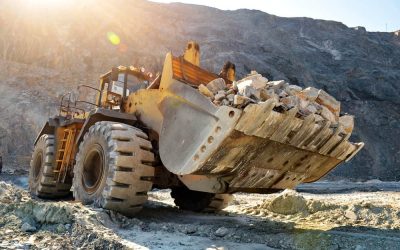In asset-intensive industries like yours, effective mining equipment servicing is critical. According to a 2024 Siemens report, unplanned downtime costs the world’s 500 biggest companies 11% of their revenues1. For effective and efficient mining operations, preventive servicing is not simply best practice; it’s crucial.
As a leading West Australian underground mining equipment specialist and service provider, HDD Solutions is well-placed to keep our clients on schedule and on target. In this article, we examine ten of the most common mining equipment failures and learn the critical role servicing plays in preventing downtime and budget blow-outs.
We know how to prevent equipment failure.
Everu hour counts – call us for the best, most reliable mining equipment maintenance solutions and parts.
Top 10 Mining Equipment Failure Scenarios You Want to Avoid
Equipment malfunction or unexpected repair work can set you back tens, if not hundreds of thousands of dollars. Here are some of the most common and yet preventable big machinery fails that West Australian mines experience.
| Type of Equipment Failure | Warning Signs | Prevention |
| Hydraulic system failure |
|
|
| Bearing failure |
|
|
| Contamination damage |
|
|
| Equipment corrosion |
|
|
| Overheating problems |
|
|
| Lack of lubrication |
|
|
| Electrical system failure |
|
|
| Mechanical wear and tear |
|
|
| Component misalignment |
|
|
| Overloading/ operator error |
|
|
Why Preventive Heavy Equipment Servicing is Critical
As you can see from the above table, heavy equipment repair services are responsible for preventing many mining failures and subsequent downtime. Indeed, many common equipment mining problems can be entirely avoided if simply regularly monitored. Preventive maintenance for mining equipment can:
- Be significantly cheaper than repair work
- Keeps equipment running at optimal levels
- Doesn’t use unnecessary energy or resources to keep equipment functioning
- Reduce safety risks in the workplace
- Ensure compliance with Australian health and safety requirements
- Extend mining equipment lifespan
- Work downtime into low-peak periods rather than unexpectedly in high-peak periods of operation
- Keep a mine competitive
Choose HDD Solutions as Your Mining Equipment Maintenance Partner
As West Australian leaders in the maintenance of underground mining equipment, HDD Solutions is your reliable partner, dedicated to going above and beyond expectations to ensure your mine runs at maximum productivity and profit. With over 30 years in the mining maintenance industry, and with a cutting-edge and fully kitted out workshop in Wangara Perth, our team of specialist diesel fitters and technicians is ready to respond to any mining equipment failure.
We deal with all the usual big names, like Caterpillar, Sandvik, Atlas Copco and Normet, but can work with any machinery you have on site. We also provide first-rate mining equipment parts and mining equipment hire.
For the very best in mining equipment and maintenance, partner with reliable experts.
FAQs
What Maintenance Prevents Mining Equipment Failure?
Mining maintenance best practice is a combination of daily operator checks and periodic professional inspections. Looking out for leaks, cracks, fluid discolourations, pressure levels, compromised efficiency, and keeping an ear open to unusual operational sounds or vibrations will help keep your machinery well-serviced and in top condition. However, this is not a finite list of signs of mining equipment failure. If ever in doubt, contact HDD Solutions on 08 9302 1532 for an expert inspection.
How Often Should Mining Equipment be Serviced?
Who Can Service My Mining Equipment to Prevent Breakdowns?
HDD Solutions are expert diesel fitters and technicians. Based in Wangara, we can conduct site inspections and repairs here in our workshop or on-site. We have over 30 years of experience providing the best quality mining equipment servicing, repair and parts hire. You can rely on us to prevent heavy machinery fails.
How do I choose a Reliable Mining Equipment Service Provider in WA?
Look for experts with equipment specialisations and comprehensive capabilities. They should be able to demonstrate a proven track record in managing mining equipment breakdowns and providing premium customer service. Don’t hesitate to ask for client testimonials. A strategically located and easily-accessed mining servicing workshop is advantageous.
HDD Solutions ticks all these boxes and more with our Wangara Perth facility and specialist mining equipment technicians.




